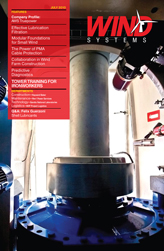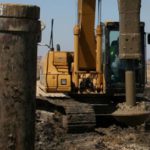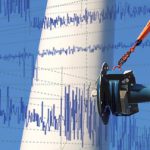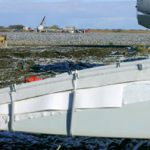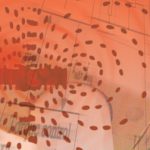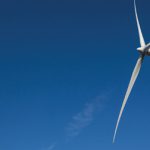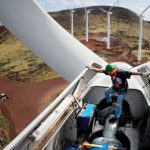The idea of harnessing the power of the wind continues to grow in popularity, presenting a viable source of clean, emissions-free power and leading to an increase in the number of installed wind power projects each year. As a result, quality installation locations with sufficient wind power are getting harder to come by.
According to the AWEA Small Wind Turbine Global Market Study for 2010, “Despite an economic downturn, the U.S. market for small wind turbines—those with rated capacities of 100 kilowatts (kW)1 and less—grew 15 percent in 2009 with 20.3 megawatts (MW) of new capacity and $82.4 million in sales. This growth equates to nearly 10,000 new units and pushes the total installed capacity in the U.S. to 100 MW.2.” Figure 1
Whether you are planning a shopping mall or a wind farm, one of the most important factors to take into consideration is the location. With a growing number of companies cashing in on subsidies and tax incentives, there is a greater demand for quality wind project installation sites. There are several factors to consider when deciding on a location for a small wind turbine including local design wind speeds, soil conditions, geographic location, the size, shape, and distance of surrounding objects within 500 feet, site excavation/preparation needed, accessibility of the site, and the overall distance that generated power will be transmitted. Each of these factors can play a critical role in determining the feasibility of a location supporting a wind turbine.
For example:
• The size and shape of surrounding objects may prevent sufficient wind from reaching the turbine, thereby reducing productivity and thus the ROI on the project;
• Some potential sites may be very difficult for concrete mixer trucks to access to pour the foundation;
• Some potential sites may have a ground surface that is impenetrable such as environmentally sensitive sites or mountainous, rocky regions where ground excavation is not practical.
While some of these factors can be reason enough to look somewhere else for a suitable location, some locations are worth the effort involved in getting the turbine installed in the right place. In some wind shear sites the wind speed can increase by 20 percent, and the power output by 34 percent for every 10 meters in elevation. The right location can make all the difference.
Small and community wind turbine systems can be supported by a variety of different foundation types depending on the soil, turbine height, and regional wind loads. Some of these support methods include driven piles, concrete piers, single piece poured in-place foundations, single piece precast foundations, and modular precast foundations. Figure 2
Of these foundation methods, the one foundation system that has been getting the attention of designers and developers of wind turbine installations is the precast modular foundation. This is happening for several reasons, primarily because they are non-ground penetrating and can simply be placed in location with minimal site preparation. This makes them perfectly suited for use in locations where ground penetration is either not allowed—such as landfill or environmentally sensitive applications—or impractical due to hard to penetrate ground conditions.
Besides the previously mentioned subsidies and tax incentives the EPA has announced that they are behind the push for renewable energy projects on environmentally sensitive sites, such as landfills or Superfund sites. The following statement was issued by the White House in 2009: “President Obama and Congress are pushing to identify thousands of contaminated landfills and abandoned mines that could be repurposed to house wind farms, solar arrays, and geothermal power plants.”
The Environmental Protection Agency (EPA) made this statement the same year: “The EPA is encouraging renewable energy development on current and formerly contaminated land and mining sites. The EPA has identified thousands of properties that could potentially host solar, wind, or biomass energy production facilities. The EPA used information on properties from several land cleanup programs, including abandoned mine lands and lands under EPA’s Superfund, Brownfields, and Resource Conservation and Recovery Act programs.” Figure 3
Environmentally sensitive sites such as landfills and contaminated Superfund sites are ideal candidates for renewable energy because they are considered already disturbed lands and thereby relieve the pressure associated with developing on undisturbed or uncontaminated lands. However, many of these sites do not permit or allow ground penetration for obvious reasons. Once you get past the three feet of top cap soil you reach the contaminated soil below. This is one of the main benefits to using precast modular foundations on these types of sites: they never penetrate the soil. Additional areas where precast modular foundations are finding success include installations going in over bedrock—where penetration is difficult, if not impossible—installations with high water tables, and installations with adverse soil conditions such as corrosive soils or soils with poor passive earth-pressure characteristics. In addition to not penetrating the ground, precast modular foundation systems offer a variety of other benefits such as:
• Can be installed in remote locations where mixer trucks typically are unable to reach;
• Reduced site excavation/preparation needed;
• Speed of delivery and installation;
• Eliminates the need for cast in place concrete and all associated issues including forming, pouring, and dry time which can dictate the pace of the installation process;
• Accommodates most site locations and conditions;
• Design performance is based on turbine asset weight, which is known precisely (on the contrary, driven piles rely on assumed passive soil pressures and other assumptions).
To meet the growing demand for precast modular foundations, a new and innovative foundation system has been developed for small and community wind turbines that will allow the harnessing of wind power on sites like landfills and contaminated Superfund sites, as well as those found in remote locations once thought unreachable.
Cell Block™ modular foundation systems—developed by Cell Blocks, Inc,. and Oldcastle Precast, Inc., for small and community wind turbines—are a precast post tensioned block system that can be assembled in a variety of configurations on site with minimal site preparation. They are designed to meet stringent manufacturing specifications for quality control and mix consistency. Cell Block modular foundation systems offer several key benefits not found in the other turbine foundation methods. One such benefit is scalability, which means the foundation can be enlarged or added onto in order to accommodate additional assets such as control buildings or shelters without interrupting the use of the turbine system. Another key benefit is that it can easily be delivered and installed within the same day without requiring the labor, prolonged site prep, forming, and dry time associated with other methods such as poured in place. Figure 4
Cell Block modular foundation systems can also be decommissioned and reused in a different location. The post-tensioned method of connection allows the blocks to be disconnected from each other and relocated or repurposed in the event that the wind turbines they support are moved or decommissioned. This results in a tremendous environmental advantage over poured in place concrete foundations, which either require a labor-intensive effort to break up and remove the buried concrete or, more likely, leaving the concrete in place long after the turbines have been removed.
Each Cell Block modular foundation system is designed and engineered specifically for the location of the installation. The size, quantity, and configuration of the blocks are engineered based on a number of critical considerations including soil bearing pressures, regional wind design speeds, factored loads, uplift potential, buoyancy loads, and stress loads on all materials, as well as many other factors that must be considered during the design and engineering process.
Cell Block modular foundation systems offer an innovative alternative to driven piles, concrete piers, and single piece poured in place foundations. Designers and developers of wind turbine foundations are no longer constrained by the limits and labor intensive efforts that are often associated with attempting to put wind turbines in environmentally sensitive or remote locations. Having precast modular foundations as an option for supporting their wind turbines give the designers and developers more freedom to do what they do best—to go wherever the wind blows.



















